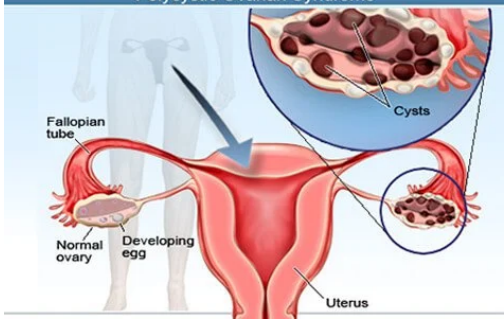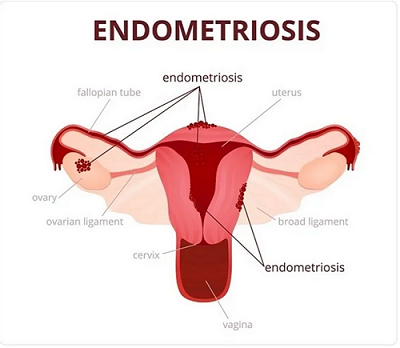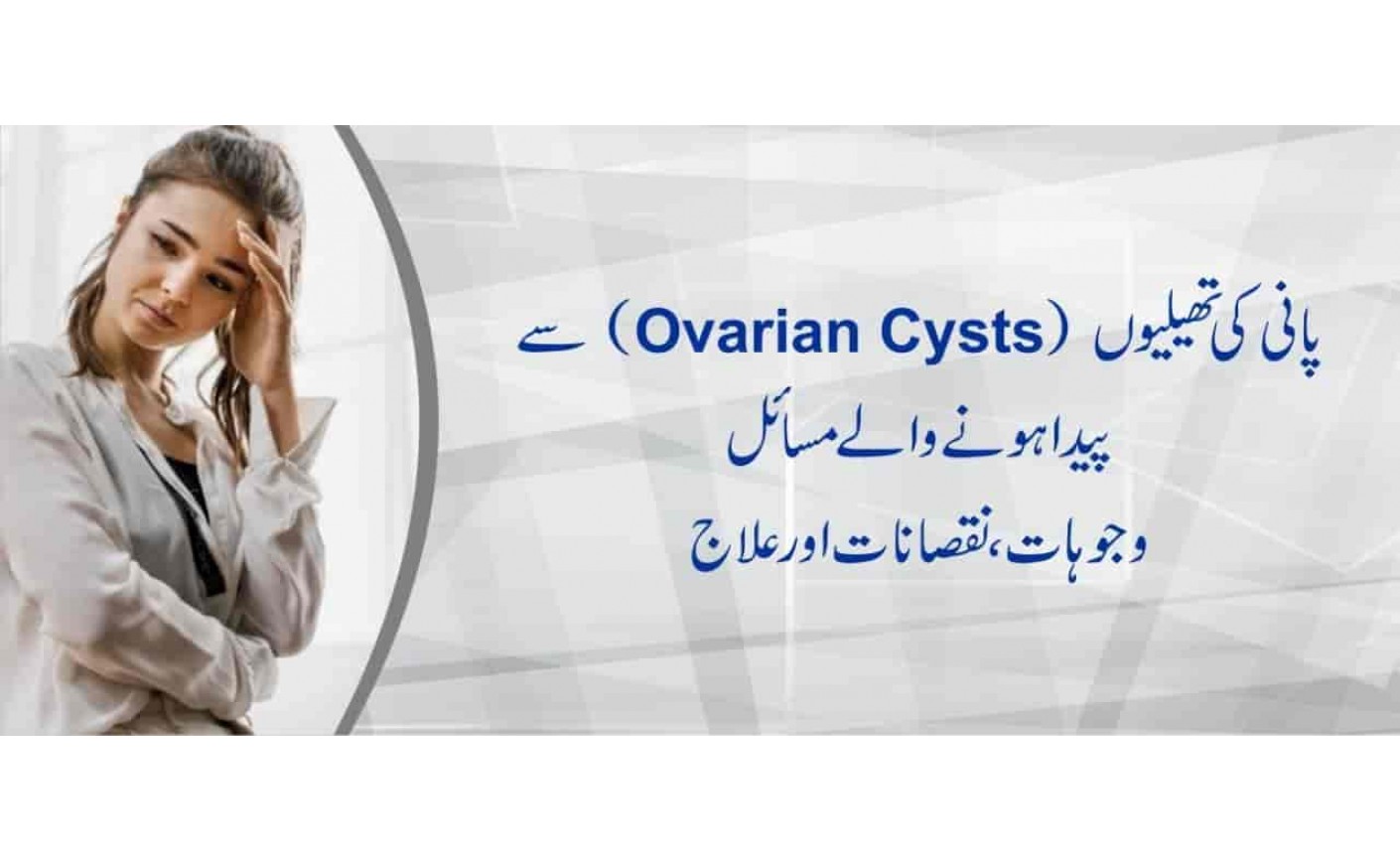Your cart is currently empty!
What are Ovarian Cysts & PCOs?
Ovarian cysts are filled bags/pockets in ovaries of women similar to a blister, contain liquid, gaseous, or semi-solid material.
Any ovarian follicle which is larger than 2cm is usually an ovarian cyst. Cysts can range from being a small as a pea to larger than an orange. In some cases, cysts become so large that the woman looks pregnant.
Majority of the ovarian cysts are harmless. Cysts mostly occur during women’s childbearing years. However it may affect women of any age as per the “Center for Disease Control and Prevention (CDC), USA”, most premenopausal women and up to 14.8% of postmenopausal women are found to have ovarian cysts.
In some cases, ovarian cysts may cause pain and bleeding. If the size is over 5cm in diameter then it needs to take quick action for treatment.

Types of Ovarian Cysts
There are many types of ovarian cysts;
Functional Ovarian Cysts:
It is the most common type, harmless, part of a female’s normal menstrual cycle, and is short-lived.
A women’s ovary contains thousands of follicles that are the house of immature eggs (ovum). When ovulation is near during the menstrual cycle each month, a selected number of follicles are signaled to grow (become mature) for ovulation. A cyst that formed due to malfunctioning during follicle maturation is known as a functional cyst. There are two types of functional cysts:
Follicular cyst: It forms when a follicle ruptures and releases eggs instead of growing to be mature, forming a cyst.
Corpus Luteum cyst: After ovulation when follicle’s opening seals off after releasing the eggs and accumulates the fluid and grows into a cyst which is known as corpus luteum.
Other Types of Ovarian Cysts
There are few other types of ovarian cysts but not related to the menstrual cycle.
Dermoid cyst: These cysts developed from the cells that produce eggs and are complex and contain hair, teeth or skin, etc. These are rarely cancerous.
Cystadenomas: These types of cysts developed from ovarian tissues and are filled with liquid or mucous.
Endometriomas: These types of cysts developed from the displaced endometrial cells attached to the ovary and form growth endometriosis. These cysts are usually called chocolate cysts.

The above three types of cysts are usually complex and may cause damage to ovaries, including twisting, scar tissues, and adhesion formation. Both dermoid and cystadenomas cysts may cause the ovary to become very large and displaced.
Polycystic ovaries:
When many small cysts develop in a row over the surface of the ovary like a strand of pearls known as polycystic ovary. Polycystic ovaries are usually associated with Polycystic Ovary Syndrome (PCOS) but all women diagnosed with PCOS do not necessarily have ovaries with these types of cysts. In this case, ovaries become enlarged, typically twice the normal size. PCOS is rapidly becoming a leading endocrine disorder among women.
Causes of Ovarian Cysts
- Much use of Chicken, fast food, Antibiotic, unhealthy diet
- Hormonal imbalances
- Irregular menstrual cycle
- Hypothyroidism
- Smoking
- Early age menstruation (11 years or early)
- BMI above 30
- The use of Clomiphene (Clomid, Serophene) also increases the chances for the development of corpus Luteum cysts
- Infertility treatments with Gonadotropins also found to cause multiple large ovarian cysts in few cases
- Use of Tamoxifen for breast cancer treatment
Symptoms of Ovarian Cyst
Mostly, ovarian cysts do not show any symptoms but symptoms can appear as a cyst grows. Those symptoms may be;
- Abdominal bloating and swelling
- Painful bowel movements
- Nausea and vomiting
- Pelvic pain before or during periods
- Painful intercourse
- Pain in the lower back or thighs
- Breast tenderness
Severe symptoms that require immediate medical treatment are given below;
- Severe or sharp pelvic pain and fever
- Faintness or dizziness
- Rapid breathing
These symptoms may show a ruptured cyst or an ovarian torsion and these symptoms can have serious consequences if not treated promptly.
Complications due to Ovarian Cysts
Most ovarian cysts are harmless and finish on their own without any medical treatment and do not show any symptoms. But in some cases, it may be diagnosed as cancerous cysts which need treatment.
Ovarian torsion is another complication that happened rarely. In this issue, a large cyst can cause a twist of the ovary, or displacement from its original position, and also discontinue the blood supply. If it is not treated timely, can damage or death the ovarian tissues. 3 percent of gynecological surgeries are due to this complication.
Ruptured cysts, which are also happened rarely, can cause heavy internal bleeding and pain which increases the chances of infection and can become life-threatening if not treated well and on time.
Signs and Symptoms of Complicated Cysts
Bursting: If the cyst bursts, the patient will face severe pain in the lower abdomen, and if the cyst is infected then the pain will be worse and bleeding may also be there.
Cancer: In few cases, ovarian cysts may become early-stage ovarian cancer.
Torsion: If the cyst is on the stem of the ovary, then the ovary can be twisted, blood supply may be blocked, and will cause severe pain in the lower abdomen.
How Ovarian Cysts can be diagnosed?
Ovarian cysts can be diagnosed by different tests with the suggestion of your doctor as given below;
Serum CA-125 Essay: It is a blood test that is used to determine whether the cyst is cancerous or not but this test is not always accurate because sometimes elevated levels of CA-125 may also show the presence of uterine fibroids, adenomyosis, or endometriosis.
Endovaginal Ultrasound: It is a vaginal ultrasound probe inserted into the vagina to get the inner image which is better than the external ultrasound.
Laparoscopic Surgery: It is performed to take a biopsy and to determine the type of cyst.
CT scan or MRI: It can also be used for further concerns.
Avoid these Things
- Eat only organic meats and dairy
- Avoid fast food, chicken, anti-biotic and soft drinks
- Stop eating soy foods
- Stop drinking water from plastic bottles
- Do not microwave the foods in plastic
- Avoid parabens and mineral oil in skincare products
- Try to use natural detergents
Excellent herbs for Ovarian Cysts
There are lots of herbs those not only can finish the ovarian cysts but also can prevent in future. These herbs help to promote hormonal balance, regularize ovulation and menstrual cycle. The herbs that can detoxify the liver, are also balance the hormones and prevent cysts.
Maca root: Maca is a great fertility and hormones balancing herb that do not have any hormones but can balance the hormonal health without any side effects with daily dose 1,000 – 3,000 mg.
Vitex: Vitex is a magical herb for women’s issues. It helps to regulate the hormonal balance, menstrual cycle and promote ovulation.
Milk Thistle seed: This herb detoxifies the liver in a great way and everyone knows that the liver cleanses the toxins from the body and excessive hormones as well.
Ovuline Capsules & Maca root: Ovuline capsules are a combination of excellent traditional herbs which produces magical result especially when used with maca root almost for 2 to 4 months. It also cures inflammation, displacement or twisting of ovaries, open the blocked tubes and also a great treatment for the shrinking and enlarged ovaries as well. These treatments are also ultimate solutions for PCOS so when you face the issues like Ovarian cysts, PCOS, then only try these natural treatments along with spearmint tea.
Mensolen Syrup: Mensolen syrup is another excellent treatment for ovarian cysts, period’s pain, migraine, and other menstrual health issues.
Turmeric Capsules: Turmeric capsules are very helpful to control endometriosis and inflammation.
Hope that, this article will be much helpful for the women those are suffering from these issues and also let us know about the performance when you use the above said herbs for your treatment.




